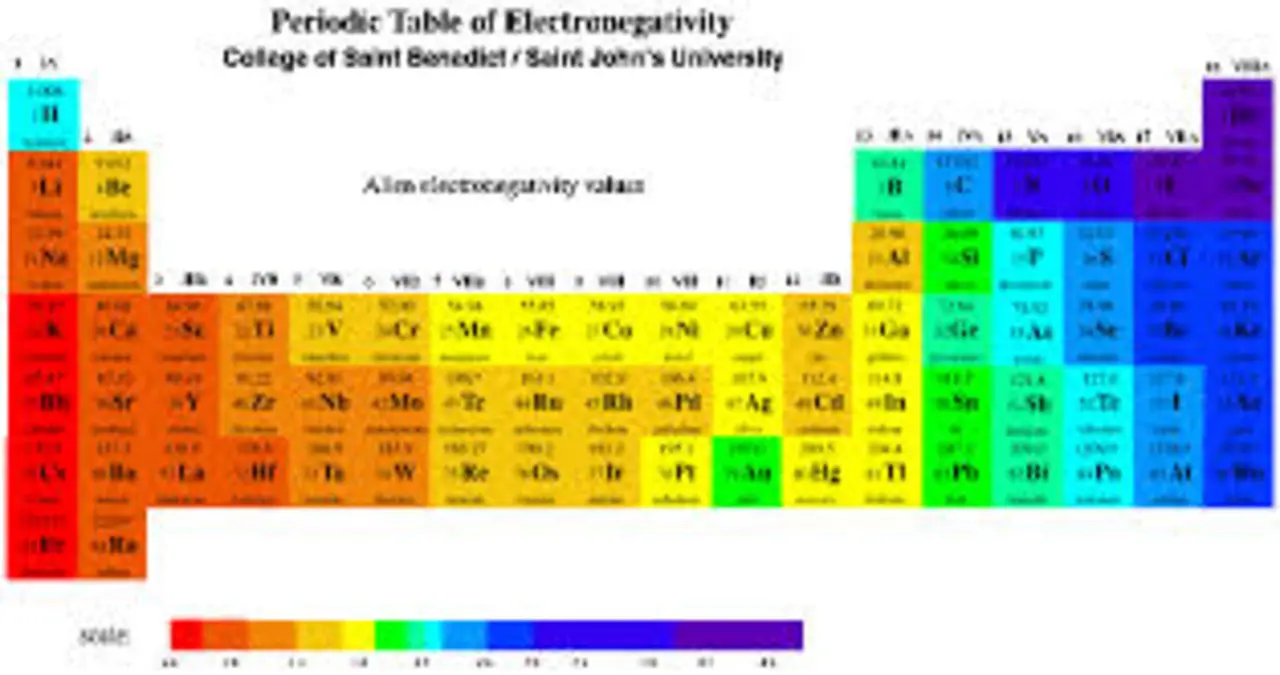

Understanding the Periodic Table with Charges
The periodic table is one of the most fundamental tools in chemistry, serving as a roadmap for understanding the elements that make up our universe. While many people are familiar with the layout of the periodic table, fewer are aware of the significance of the Periodic Table associated with each element. This article will delve into the concept of charges in the periodic table, exploring how they relate to the behavior of elements, their interactions, and their roles in chemical reactions.
The Basics of the Periodic Table
At its core, the periodic table organizes elements based on their atomic number, electron configuration, and recurring chemical properties. Each element is represented by a unique symbol, and its position in the table provides insight into its characteristics. The table is divided into rows called periods and columns known as groups or families. Elements in the same group often exhibit similar properties, including their tendency to gain or lose electrons, which directly relates to their Periodic Table.
The concept of atomic charge is crucial for understanding how elements interact with one another. Atoms are made up of protons, neutrons, and electrons. Protons carry a positive charge, while electrons carry a negative charge. Neutrons are neutral and do not affect the charge of an atom. The overall charge of an atom is determined by the balance between the number of protons and electrons. When an atom gains or loses electrons, it becomes an ion, which can carry a positive or negative charge.
Understanding Atomic Charges
When we talk about charges in the context of the periodic table, we are primarily referring to the charges of ions formed by elements. Ions are atoms that have either lost or gained electrons, resulting in a net charge. Cations are positively charged ions formed when an atom loses one or more electrons, while anions are negatively charged ions formed when an atom gains electrons.
The tendency of an element to form cations or anions is influenced by its position in the periodic table. For instance, metals, which are typically found on the left side of the table, tend to lose electrons and form cations. On the other hand, nonmetals, located on the right side, are more likely to gain electrons and form anions. This behavior is largely due to the elements’ electronegativity, which is a measure of an atom’s ability to attract and hold onto electrons.
The Role of Electronegativity
Electronegativity plays a significant role in determining the charges of ions formed by elements. It is a key concept that helps explain why certain elements behave the way they do in chemical reactions. The electronegativity of an element is influenced by its atomic structure, particularly the number of protons in the nucleus and the distance of the valence electrons from the nucleus.
As you move across a period from left to right in the periodic table, electronegativity generally increases. This means that elements on the right side of the table, such as fluorine and oxygen, have a stronger tendency to attract electrons compared to those on the left, like sodium and potassium. Consequently, elements with high electronegativity are more likely to gain electrons and form anions, while those with low electronegativity are more likely to lose electrons and form cations.
Group Trends in Charges
The periodic table is organized into groups, and each group exhibits distinct trends in terms of charges. For example, alkali metals, found in Group 1, have a single electron in their outermost shell. This makes them highly reactive and prone to losing that electron, resulting in a +1 charge when they form cations. Similarly, alkaline earth metals in Group 2 have two electrons in their outer shell and typically lose both to form cations with a +2 charge.
In contrast, the halogens in Group 17 have seven electrons in their outer shell. They are just one electron short of achieving a stable octet configuration, making them highly electronegative and likely to gain an electron to form anions with a -1 charge. Noble gases, located in Group 18, are unique in that they have a full outer shell and do not typically form ions, resulting in a neutral charge.
Transition Metals and Their Charges
Transition metals, found in the central block of the periodic table, exhibit a unique behavior when it comes to charges. Unlike the main group elements, transition metals can form multiple oxidation states, meaning they can lose different numbers of electrons to form cations with varying charges. For instance, iron can exist as Fe²⁺ or Fe³⁺, depending on the chemical environment.
This variability in charge is due to the presence of d electrons in transition metals, which can participate in bonding and influence the element’s reactivity. The ability to adopt multiple oxidation states allows transition metals to play crucial roles in various chemical reactions, including catalysis and the formation of complex ions.
The Importance of Ionic Compounds
Understanding charges in the periodic table is essential for grasping the formation of ionic compounds. Ionic compounds are formed when cations and anions combine to create a neutral compound. The charges of the ions must balance out, resulting in an overall neutral charge for the compound.
For example, when sodium (Na), which forms a +1 cation, reacts with chlorine (Cl), which forms a -1 anion, they combine to form sodium chloride (NaCl). The positive charge of the sodium ion balances the negative charge of the chloride ion, resulting in a stable ionic compound. This principle of charge balance is fundamental to the formation of all ionic compounds and is a key concept in understanding chemical reactions.
Covalent Bonds and Partial Charges
While ionic compounds are formed through the transfer of electrons, covalent bonds involve the sharing of electrons between atoms. In covalent compounds, the concept of charge becomes more nuanced, as the sharing of electrons can lead to the development of partial charges within the molecule.
When two atoms with different electronegativities form a covalent bond, the shared electrons are not distributed equally. The atom with higher electronegativity will attract the shared electrons more strongly, resulting in a partial negative charge on that atom and a partial positive charge on the other. This phenomenon is known as polarity and is crucial for understanding the behavior of molecules in various chemical environments.
The Impact of Charges on Chemical Reactions
The charges of ions and molecules play a significant role in determining the outcomes of chemical reactions. When reactants come together, their charges influence how they interact and whether they will form products. For instance, oppositely charged ions are attracted to each other, leading to the formation of ionic bonds, while similarly charged ions repel each other.
In addition to ionic interactions, the presence of partial charges in covalent compounds can affect reaction mechanisms. Molecules with polar bonds may participate in hydrogen bonding or dipole-dipole interactions, influencing their reactivity and the types of products formed. Understanding these charge-related interactions is essential for predicting the behavior of substances in chemical reactions.
The Role of Charges in Biological Systems
Charges are not only important in the realm of chemistry but also play a crucial role in biological systems. Many biological molecules, such as proteins and nucleic acids, rely on ionic and polar interactions to maintain their structure and function. For example, the charges on amino acids can influence protein folding and stability, while the charges on nucleotides are essential for the formation of DNA and RNA.
In addition, the movement of ions across cell membranes is vital for various physiological processes, including nerve impulse transmission and muscle contraction. The balance of positive and negative charges within cells is crucial for maintaining homeostasis and ensuring proper cellular function.
Conclusion
The periodic table with charges is a powerful tool for understanding the behavior of elements and their interactions. By grasping the concepts of atomic charge, electronegativity, and the formation of ions, we can gain valuable insights into the world of chemistry. Whether we are studying the formation of ionic compounds, the nature of covalent bonds, or the role of charges in biological systems, the periodic table serves as a foundational resource for exploring the complexities of the elements that make up our universe.
In summary, the periodic table is not just a collection of elements; it is a dynamic framework that reveals the underlying principles governing chemical behavior. By appreciating the significance of charges within this framework, we can deepen our understanding of the natural world and the intricate relationships that define it.















